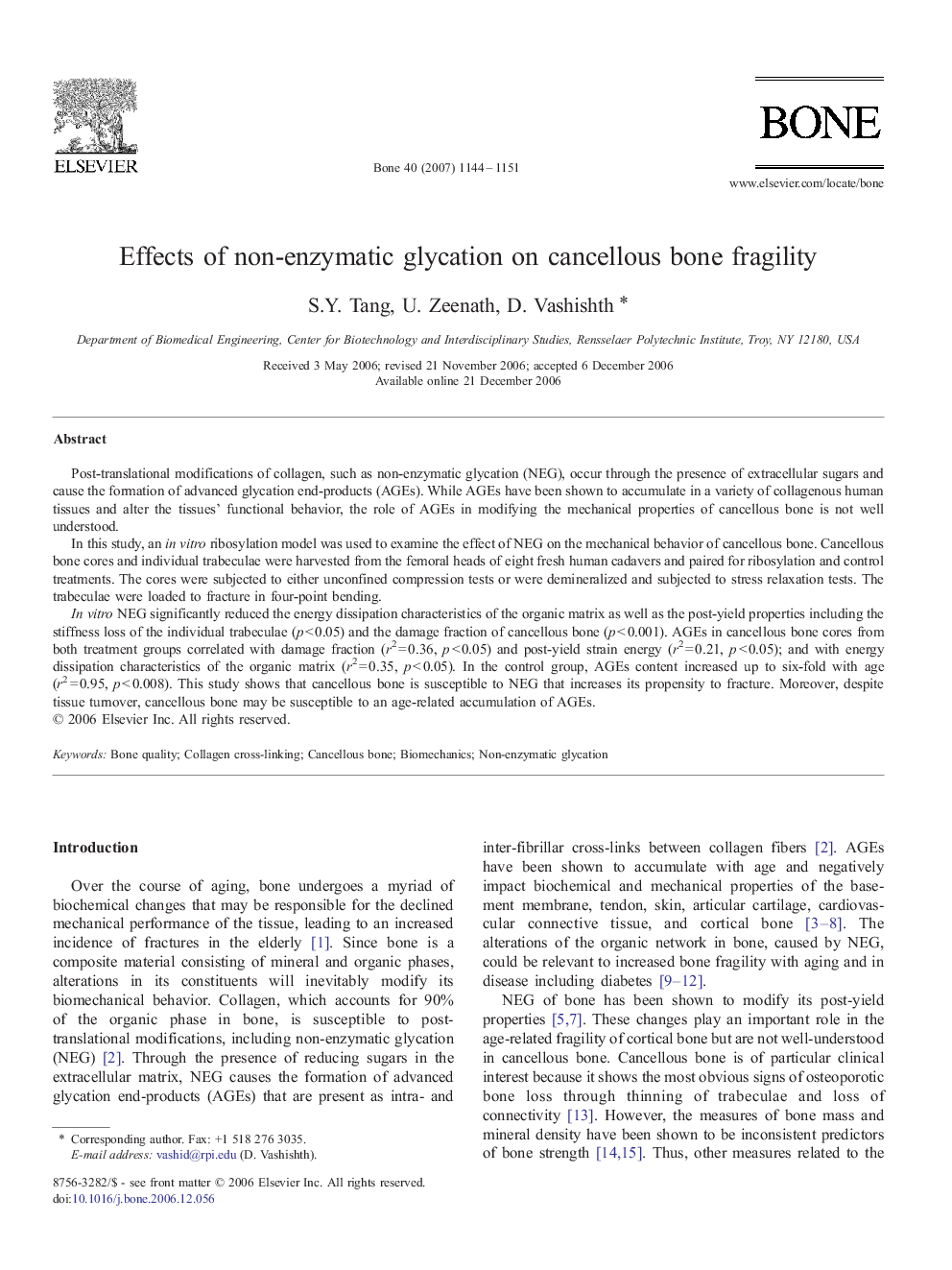| Article ID | Journal | Published Year | Pages | File Type |
|---|---|---|---|---|
| 2782158 | Bone | 2007 | 8 Pages |
Post-translational modifications of collagen, such as non-enzymatic glycation (NEG), occur through the presence of extracellular sugars and cause the formation of advanced glycation end-products (AGEs). While AGEs have been shown to accumulate in a variety of collagenous human tissues and alter the tissues' functional behavior, the role of AGEs in modifying the mechanical properties of cancellous bone is not well understood.In this study, an in vitro ribosylation model was used to examine the effect of NEG on the mechanical behavior of cancellous bone. Cancellous bone cores and individual trabeculae were harvested from the femoral heads of eight fresh human cadavers and paired for ribosylation and control treatments. The cores were subjected to either unconfined compression tests or were demineralized and subjected to stress relaxation tests. The trabeculae were loaded to fracture in four-point bending.In vitro NEG significantly reduced the energy dissipation characteristics of the organic matrix as well as the post-yield properties including the stiffness loss of the individual trabeculae (p < 0.05) and the damage fraction of cancellous bone (p < 0.001). AGEs in cancellous bone cores from both treatment groups correlated with damage fraction (r2 = 0.36, p < 0.05) and post-yield strain energy (r2 = 0.21, p < 0.05); and with energy dissipation characteristics of the organic matrix (r2 = 0.35, p < 0.05). In the control group, AGEs content increased up to six-fold with age (r2 = 0.95, p < 0.008). This study shows that cancellous bone is susceptible to NEG that increases its propensity to fracture. Moreover, despite tissue turnover, cancellous bone may be susceptible to an age-related accumulation of AGEs.
